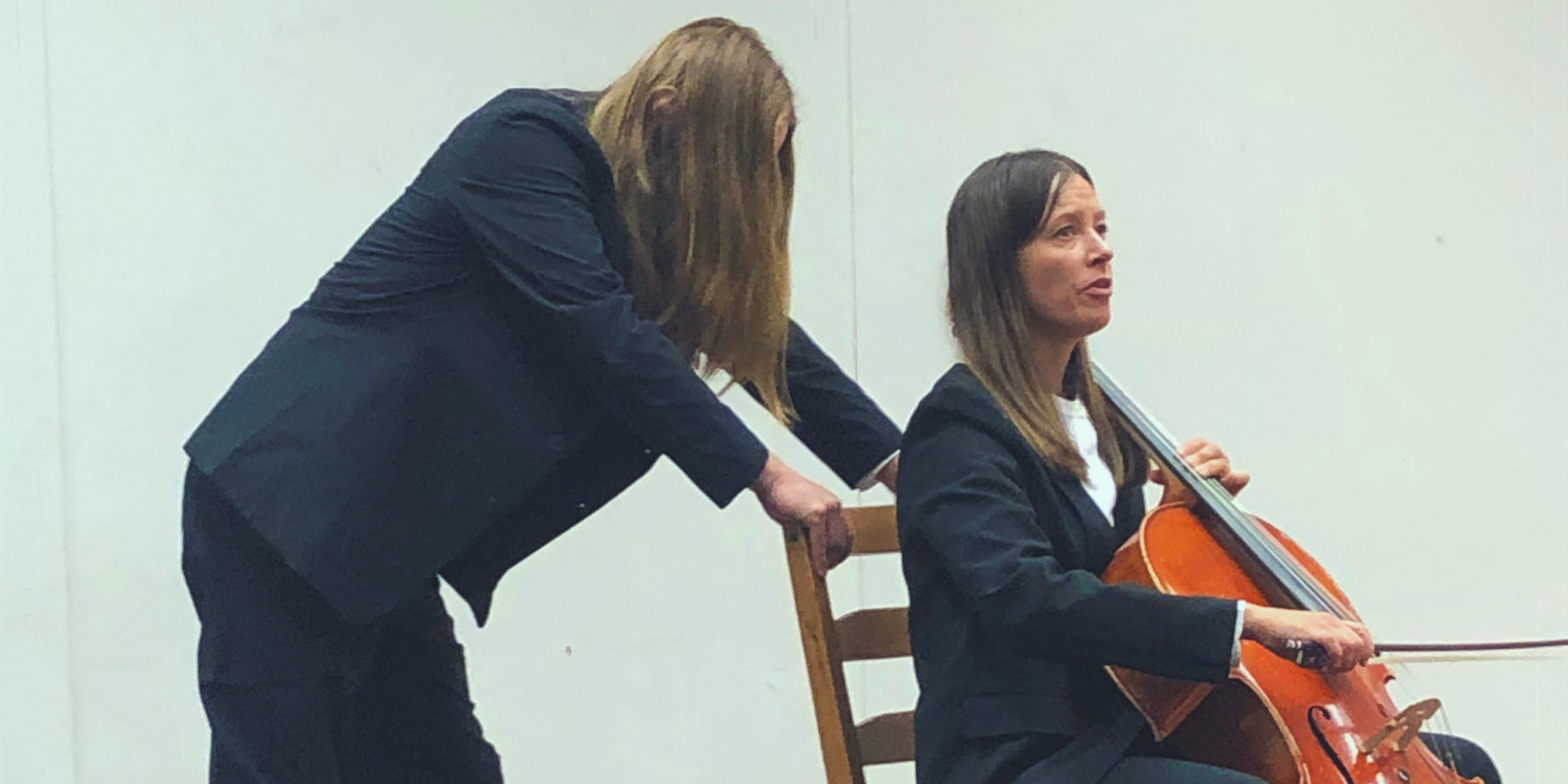Converting Stage Creations Towards Cinematic Expression
For some years, cinematic storytelling has been a central element in Studio Total’s stage creations. Already in Ice Ice Baby (2019) the artistic directors Anna Lipponen and Petri Tuhkanen explored the possibilities of cinematic narration within a theatre piece. The same thematic continued the following year in the site-specific work Dreams for Sale.
In 2023 the research goes deeper into the interface between theatre and film. The theatre group produces two independent artworks based on the same material; Dreamwork will first be released as a film followed by a stage creation by the same name basing on the same material. The fundamental question in the work duo is how a stage work can be also used as the material for a film.
“We started off by rehearsing a lot of material for stage, with the ground idea of course that it will also end up being looked through a camera,” describes the director Anna Lipponen the starting process of Dreamwork. Next Lipponen, together with cinematographer and video designer Petri Tuhkanen, will write a movie script based on the stage script along with the storyboard. And the results of the process will be two independent artworks: a film titled Dreamwork and a stage creation by the same name.
For Lipponen, the most interesting aspect in creating two pieces simultaneously is the question of how to bring theatrical aesthetics in front of a camera so that it all ends up being an interesting integration of two artforms. So that the result is something other than a theatre recording or televised theatre.
RESEARCH IN THE FUTURE WORKSHOPS
Lipponen and Tuhkanen carry out the artistic and technical development work partially also in the EU funded Future Workshops that are coordinated by Circus, Dance and Theatre Info Finland. Six workgroups have been invited to the program to study the possibilities of converting a stage work on screen from different points of views. The Finnish Ministry of Culture and Education has granted the project funding from the Next Generation EU program.
“It feels really meaningful to share these experiences together with several colleagues who more of less ask the same questions in their work,” Lipponen says about the workshops. “Also, being able to present your own work phase approximately once a month in this context feels really luxurious, especially after the whole corona period.”
Bridging the gap between cinematic expression and performing arts raises a set of fundamental questions on both artforms and on our own western perception of arts. What makes cinema and theatre what they finally are? For Lipponen, this is first and foremost a production-based question. “What is our aesthetic choice or to which genre’s direction we decide to lean on in the creating process are surely the most important questions. Regarding everything.”
